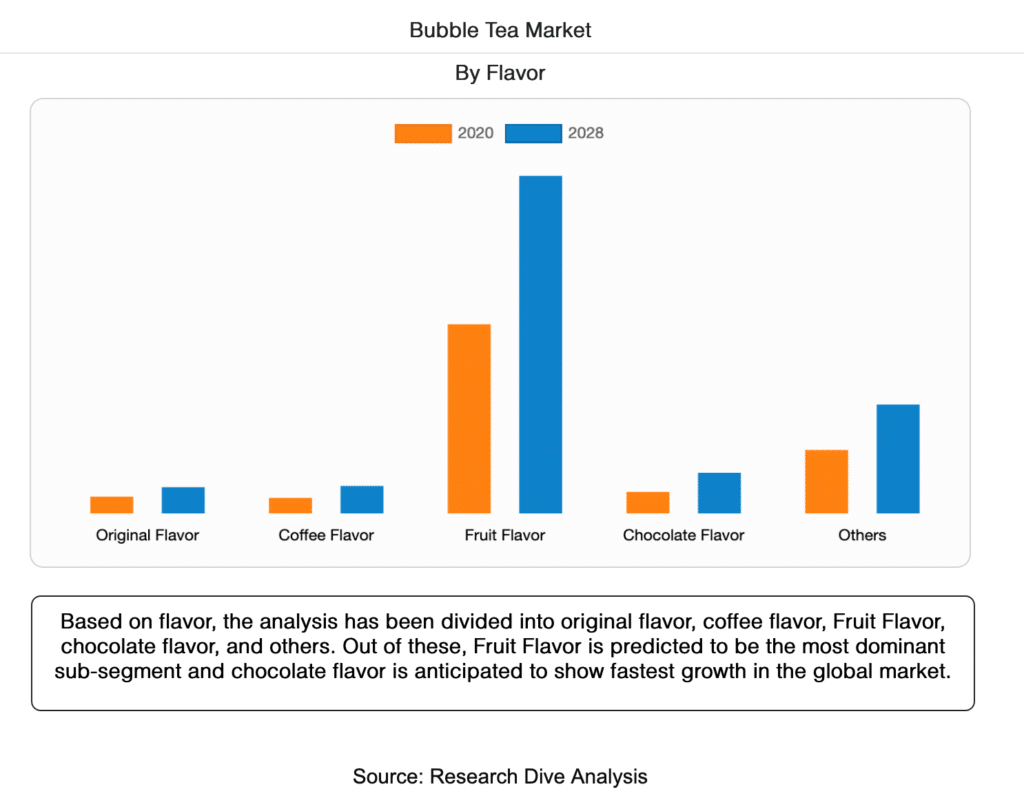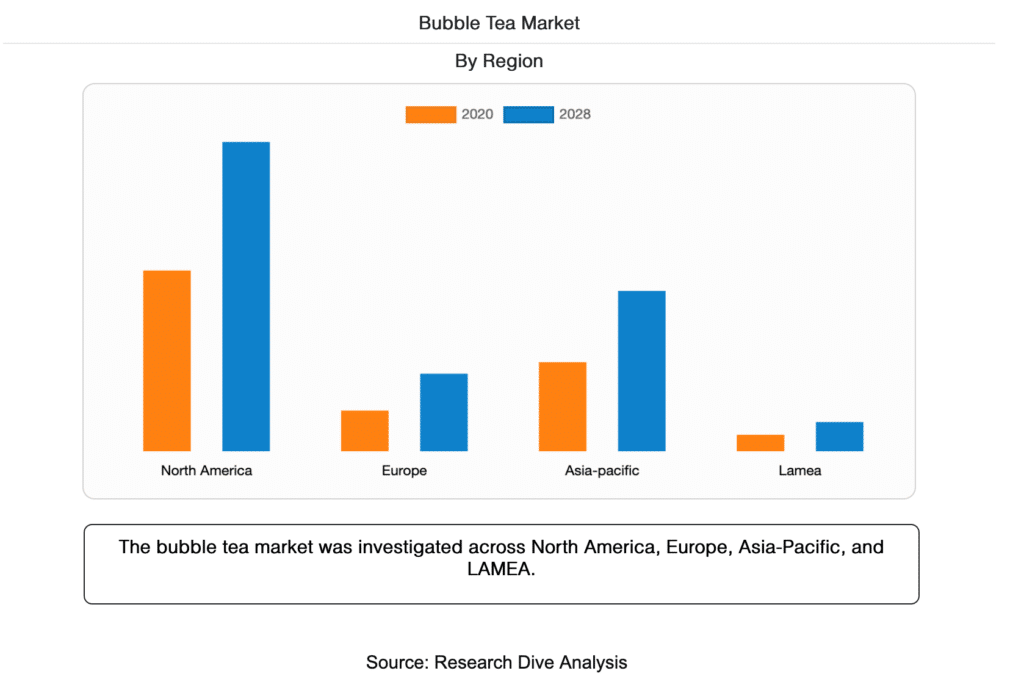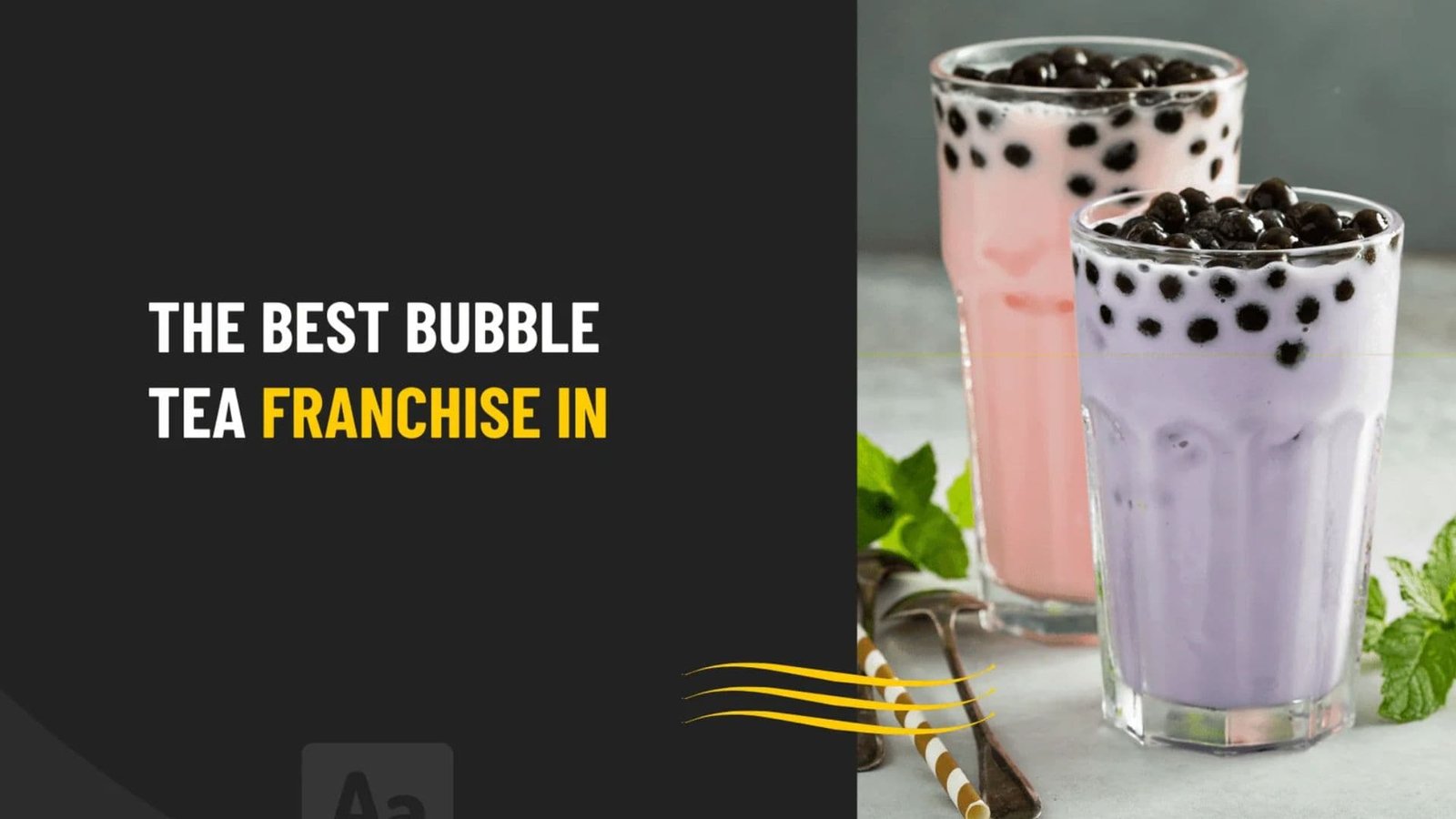The beverage known as bubble tea, sometimes referred to as Boba or Boba tea, is quickly gaining popularity around the globe. We’re assuming you’re already familiar with bubble tea. But just in case, in very basic terms, it is tea served with huge, chewy balls of tapioca at the bottom of the cup, although it’s a LOT more than that. And it’s SO GOOD if you have a sweet tooth.

Bubble tea, which was initially developed in Taiwan in the 1980s, has not only lit up the food and beverage industry but it’s lit up social media and become a huge part of pop culture too. But the reasons why bubble tea is a favorite around the world are far more complex than they first appear. And just how much of it is being made, sold and consumed may stun you.
To learn everything we’ve learned about bubble tea statistics, keep reading.
At 37%, fruit-flavored bubble teas make up the majority of global bubble tea consumption
There are lots of variations on the basic black tea bubble tea theme, but the most popular – and biggest sellers – are the refreshing fruit flavored bubble teas that so many people have fallen in love with.
Fruit flavors make up more than one third of the bubble tea consumed worldwide.

Which fruits are the most popular? Strawberry, blueberry, pineapple, passion fruit and mango make up the ‘top five’ globally according to one study, but the fact is that there are so many choices that you could probably try a new one every day for weeks.
Black tea boba bases are experiencing the biggest growth
Any boba tea flavor has to start with a tea base, and within the global market there are four primary options: black tea, green tea, oolong tea and white tea. Among them, the Black Tea sub-segment had the biggest revenue share in 2020, while the Green Tea sub-segment is anticipated to increase at the quickest rate from 2018 to 2028.
It’s believed that the green tea growth will come about as a result of a renewed interest in the beverage in general, which has long been believed to offer a number of health benefits.

In the past three months, 94% of adults between the ages of 20 and 29 had bought at least one bubble tea, according to a recent consumer study of those who buy take out beverages.
Around the world, increasingly individuals of all ages commonly like bubble teas, but young people typically consume them more frequently. Several surveys and studies have found that the majority of bubble tea consumers are typically teenagers and people in their 20s.
However, as more people learn about and come to love bubble tea each year, these numbers could soon change.
For example, another large industry survey found that 87% of American millennials drink tea of some kind on a daily basis, and including bubble tea is included in their daily rituals.
Because it’s often very colorful, and often associated with tags like kawaii on social media, some people think of boba tea as a rather feminine beverage. However, recent boba statistics suggest that young men are catching on to the trend fast too.
In the US, the largest Western market for boba tea, a large industry survey found that 81% of men, and 95% of women under the age of 25 have tried bubble tea at least once!
The Global Bubble Tea Market was assessed to be worth USD 2.1 billion in 2020 by Facts and Factors, and it is anticipated to reach USD 4.5 billion by 2026, growing at a CAGR of roughly 8.1% between 2021 and 2026. That’s an awful lot of tea.
Although bubble tea as we know it today was ‘invented’ in Taiwan, it’s become even more popular in Thailand, where the average person under 35 claims to drink 2-6 cups a day. There however unsweetened black tea boba is the primary bubble tea beverage of choice, rather than the sweeter versions now preferred in the West.

The North American bubble tea market generated $1,429.3 million in revenue in 2020, and by 2028, it is anticipated to generate $2,432.3 million. The rise in tea consumption and the several flavors of bubble tea, including the original flavor, coffee flavor, fruit flavor, and chocolate flavor, are thought to be the main factors driving bubble tea demand in this region.
The market for bubble tea in North America is anticipated to increase throughout the forecast period due to the rising popularity of tea-based fruity beverages and the fall in demand for carbonated beverages because of their high sugar content, which many experts say promotes chronic diseases like obesity.
The intake of bubble tea that uses green and black tea as its primary ingredients also has a number of health advantages according to many, including the prevention of type 2 diabetes, heart problems, a lower risk of cancer, and others, which is projected to fuel the demand for bubble tea in the years to come.
The star of every bubble tea beverage is unquestionably the chewy tapioca pearls or balls.
The drink was initially developed in Taiwan, although the majority of its distinctive ingredient is grown in Nigeria, Thailand, Indonesia, and Brazil.
The cassava root, which is native to South America but has become a dietary staple in many African countries, is the source of cassava flour. Cassava production has grown concentrated in Nigeria in particular. Nigeria exports 21% of the world’s cassava, making it the top exporter in the world, according to the Food and Agriculture Organization (FAO) of the United Nations.

One large study that polled boba tea sellers globally identified more than 250 unique flavors on offer. That number outstrips the variety of any other beverage offering outside the flavored coffee industry.
Those considering getting into the boba tea business will obviously wonder what their profit margin might be. On average, a standard (small) bubble tea beverage is offered at between $3 to $5.
This cost is then increased as customers add additional toppings and add-ins, often bringing the total cost up to as much as $10-$12. However, market growth indicates that these are prices bubble tea fans are willing to pay.





